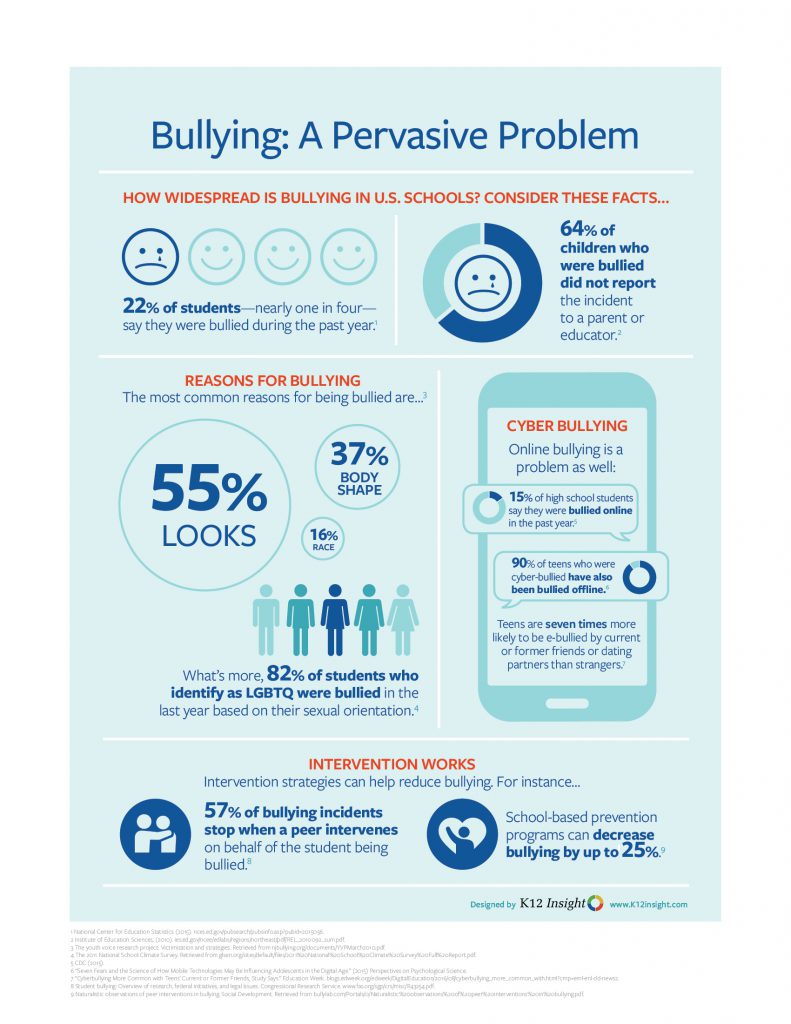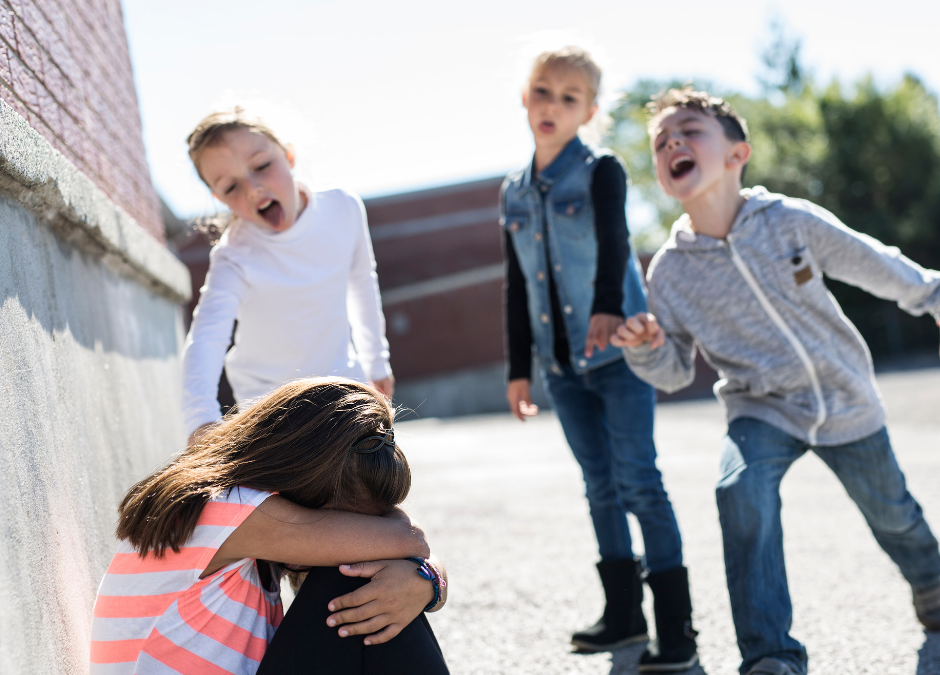Although school is supposed to be a place where kids feel safe and supported, for some children the school day is torturous and riddled with hurt and pain because they are being bullied. In the long term, being a subject of relentless bullying can have a devastating impact on a young person’s physical and mental health as well as their academic performance.
As a parent, it’s difficult to watch your child being tormented or to learn that they have been hiding from you the fact that they are being bullied. Let’s take a look at some things that you, as the parent, might consider.
The Facts
There are three core elements in a bullying situation:
- unwanted aggressive behavior
- observed or perceived power imbalance
- repetition or high likelihood of repetition of bullying behaviors
While other factors may be involved in a situation, these three items boil it down to help one assess a situation as bullying or other aggressive behavior. It is never a one-size-fits-all scenario. Every person is unique and so are their behaviors.
Who tracks statistics on bullying? Data sources include the Indicators of School Crime and Safety: 2019 (National Center for Education Statistics and Bureau of Justice) and the 2017 Youth Risk Behavior Surveillance System (Centers for Disease Control and Prevention). In these two surveys, 20% of students ages 12-18 reported having been a victim of bullying. The respondents also provided the following thoughts about those who bullied them. They believed the bully:
- Had the ability to influence other students’ perception of them (56%).
- Had more social influence (50%).
- Was physically stronger or larger (40%).
- Had more money (31%).
Where does bullying take place? Aren’t our kids supervised at school? Yes, of course, school staff works hard to keep your kids safe. However, students reported, there are certain areas of the school where they were bullied:
The following percentages of students ages 12-18 had experienced bullying in various locations:
- Hallway or stairwell (43.4%)
- Classroom (42.1%)
- Cafeteria (26.8%)
- Outside on school grounds (21.9%)
- Online or text (15.3%)
- Bathroom or locker room (12.1%)
- Somewhere else in the school building (2.1%)
Approximately 46% of students ages 12-18 who were bullied during the school year notified an adult at school about the bullying.

What YOU Can Do
If you suspect that your child is the aggressor or the victim, follow these steps:
Contact the:
- Teacher
- School counselor
- School principal
- School superintendent
- State Department of Education
There are no federal mandates for schools to have specific training on bullying prevention. Ask if the staff at your school has received training, and advocate for professional development on this topic. Inquire about how your child’s situation is being addressed. Schools are busy places, and it may be that the staff does not know that something is wrong. If your matter is not immediately addressed at the school level, contact the State Department of Education. And FOLLOW UP.
Taking Care of Our Kids
ASK. What would make you feel safe? Perhaps changing a seat in the classroom or on the bus will resolve the problem. The victim should not be singled out but should be protected. Avoid these common mistakes:
- Never tell the child to ignore the bullying.
- Do not blame the child for being bullied. Even if he or she provoked the bullying, no one deserves to be bullied.
- Do not tell the child to physically fight back against the kid who is bullying. It could get the child hurt, suspended or expelled.
- Parents should resist the urge to contact the other parents involved. It may make matters worse. School or other officials can act as mediators between parents.
What About the Bully?
The behavior of the aggressor must be addressed. Parents, school staff and even the youth, all have a role to play. We all need to model respectful and responsible behavior toward others. We need to ensure that our youth know that there are consequences to their actions. We also need to work with the aggressor to understand why they are behaving in such a manner. Often, there are underlying reasons such as their own insecurity, they have been bullied themselves, or they are suffering from a host of other situations at home. Helping the bully understand and learn from this situation. It is critical for their growth and development.
It is extremely important to teach our kids that it is okay to speak up if they are having problems ANYWHERE. Your child should not be feeling anxious, worried, scared or depressed about going to school. Let’s work together to find ways to help them navigate their youth in positive ways.

